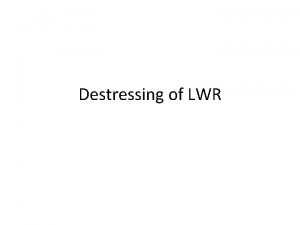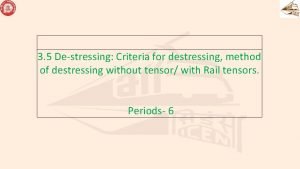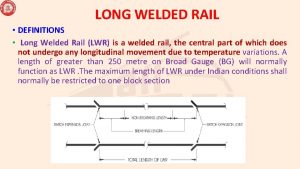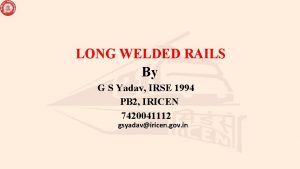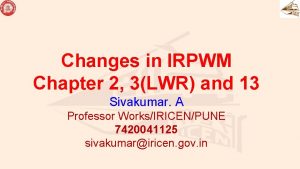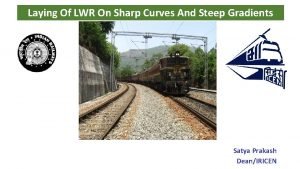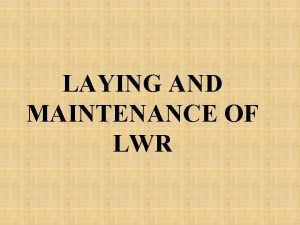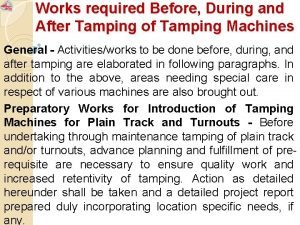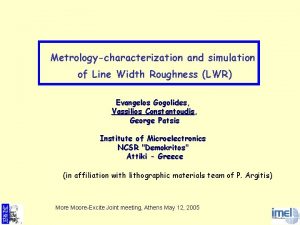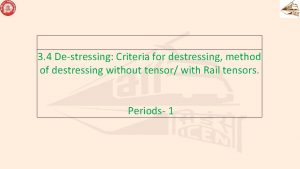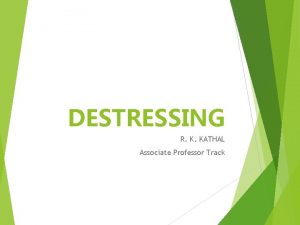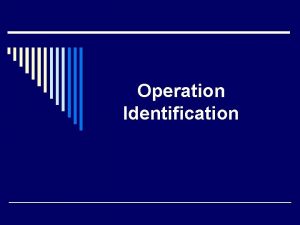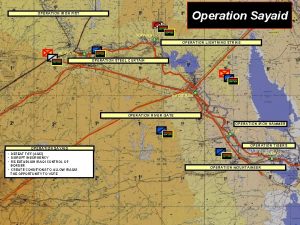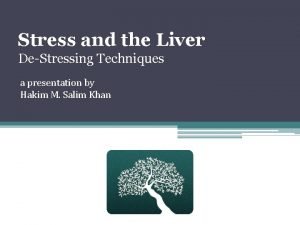Destressing of LWR Definition Destressing is the operation













- Slides: 13

Destressing of LWR

Definition • Destressing is the operation undertaken with or without rail tensor to secure stress free conditions in the LWR/CWR at the desired/specified rail temperature. • Destressing Temperature (td) is the average rail temperature during the period of fastening the rails to the sleepers after destressing LWR without the use of rail tensor. • Range of td : o Temperature zone I, III i) All sections tm to tm + 5 C o Temperature zone IV i) 52 kg & heavier tm+5 C to tm+10 C ii) Others tm to tm+5 C

Need for destressing? 1) On initial laying of LWR 2) During maintenance of LWR i) Gaps at SEJ a) Gap between the reference mark and tongue rail tip/stock rail corner at various rail temperatures shall not differ by more than +/10 mm from theoretical range as shown in Annexure-V b) Gap exceeds maximum designed gap of SEJ c) Tongue/Stock rail crosses mean position

Need for destressing? ii) After special track maintenance operations namely TFR, D/S, Lifting of track, major reliagnment of curves, TSR etc. iii) After restoration of track following an unusual occurance namely rail fracture, buckling, accidents, breaches etc iv) If number of repairs where temporary repairs have been done exeed 3 per km

Need for destressing? 3) If rail temp is likely to fall outside td+10 & td 20 C during special maintenance activities like D/S, TSR, lifting etc then 1 round of temporary destressing is essential

Practice • Once in 3 years, all LWRs shall preferably with destressed.

LWR destressing operation • Under supervision of JE/SSE Pway during traffic block of adequate duration at appropriate rail temperature • SR of 30 kmph before traffic block shall be availed to loosen rail fastenings on alternate sleepers • Impediments to free movement of rail shall be removed such as rail anchor, guard rail, check rail etc • During destressing operation, rail is required to be lifted and placed on rollers at every 15 th sleeper to permit free movement of rail

LWR destressing operation • During destressing following activities shall also be done: a) Fitting renewal namely damaged rubber pad, ERC, liners. b) Shifting of liner biting zone shall be done, wherever required c) Greasing on leg of pandrol clip , inside of inserts, below liners & liner sealing d) LC overhauling

Destressing methods • Without tensor o Conventional practice o Do not require skilled supervision o Can be used only tp is within range • With tensor o Used when prevailing temperature tp is below to o Require skilled supervision, more number of supervisors o More block time is required

Procedure (without tensor) • Approximately 1 km patch of LWR is destressed in single block of 2/2. 5 hrs which involves 2 -3 welds. Minimum 30 -40 nos labour, 2 supervisors required during block • Pre block activities: o SR of 30 kmph is imposed o ERCs are removed every alternate sleeper o LC check rail is removed if any LC is coming in destressed portion

Procedure (without tensor) • Cut is made in central portion and rails made out of alignment to permit free expansion/contraction. • Fittings are unfastened from centre cut towards LWR on either side with placing of rollers on every 15 th sleeper & tapping with wooden hammer to facilitate free movement of rail • Fastening is then started from either side of LWR portion towards central cut. • If less than 2. 5 hours block is permitted then welds are not done during this block & caution persists till next block is granted.

Procedure (with tensor) • Para 5. 7. 3 of LWR manual

THANKS
